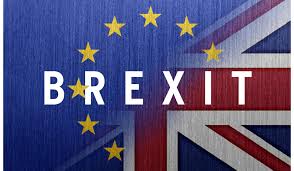 London- The British government has published a series of documents laying out its plans for what it will do in the event it fails to secure a deal on its future relationship with the European Union following Brexit.
London- The British government has published a series of documents laying out its plans for what it will do in the event it fails to secure a deal on its future relationship with the European Union following Brexit.
On Thursday, it published the first 25 of more than 70 papers on a “no deal” Brexit. They cover everything from financial services to nuclear materials.
Britain is due to leave the EU in a little more than seven months. In recent weeks, concerns have risen that the country could crash out of the bloc with no deal, which could seriously hobble trade and weaken security ties.
WHERE WE ARE
Britain voted to leave the EU in a referendum on June 23, 2016, after 51.9 percent of the people backed Brexit. On March 29, 2017, Prime Minister Theresa May formally notified the EU of Britain’s intention to leave. That kicked off a two-year negotiation period on the terms of the separation — a process so difficult some have compared to unscrambling an egg. Negotiators say they need to reach an agreement by October to ensure there is time for Parliament and the remaining 27 EU members to approve the final deal on the future relationship before Britain leaves the bloc.
WHAT HAS BEEN AGREED (IN THEORY)
In December, Britain and the EU agreed on the initial terms of the divorce, allowing negotiators to move on to talks about the future relationship between the two sides.
The divorce agreement guarantees that the 3.7 million or so EU citizens living in Britain will have the right to stay after Brexit. The same applies for the estimated 1.2 million British citizens living in EU countries.
Britain also agreed to pay the EU a divorce settlement that many estimate could touch 40 billion pounds ($52 billion) to cover the U.K.’s share of commitments made while Britain was a member.
But the trickiest part of the deal was Britain’s pledge that it wouldn’t re-establish border posts and customs checks along the border between Northern Ireland and the Republic of Ireland, the only land border between a post-Brexit Britain and the EU. While the commitment is designed to protect the peace process in Northern Ireland, it raises thorny questions about sovereignty and territorial integrity for Theresa May’s minority government, which relies on the support of Northern Ireland’s Democratic Unionist Party to pass legislation.
While these issues have been settled in principle, the document approved by both sides stipulated that “nothing is agreed until everything is agreed,” meaning that implementation hinges on successful completion of an agreement on future relations.
WHAT REMAINS TO BE AGREED
Everything involving future relations between Britain and the EU, including trade, security cooperation and immigration rules is up for discussion.
The overarching question is what type of access British companies will have to the EU’s market of 500 million people. Britain wants “as frictionless trade as possible,” but the EU says the U.K. can only have tariff-free access if it abides by the bloc’s rules, including free movement of people. Britain is reluctant to accept this because concern about the scale of immigration was one of the driving issues in the Brexit vote, and the government has promised to take back control of the country’s borders, laws and economy.
Britain has argued that the EU should compromise because of the deep links, and not just on economic matters. The government stresses that continued cooperation on issues such as security and scientific research will benefit both sides.
WHAT ABOUT A TRANSITION TO EASE THE SHOCK?
Britain has proposed a transition period in which current EU rules would remain in effect until the end of 2020 to give businesses and individuals time to adjust to the changes. But that is subject to negotiation, so there’s no certainty over a transition period. Commentators have raised concerns about shortages of food and medicines in the event of a no-deal Brexit.
Britain’s Brexit Secretary Dominic Raab said Thursday that Britain was determined to “manage the risks and embrace the opportunities” of Brexit, dismissing headlines that the U.K. could run out of sandwich supplies and other staples.
WHAT IS HAPPENING THURSDAY
The government began releasing a series of contingency planning documents intended to help individuals, businesses and other organizations prepare for a no-deal Brexit. While the opposition says this is intended to scare people into supporting whatever deal the government negotiates, government officials say they are simply being prudent in planning for the worst-case scenario.
AP

Leave a Reply
You must be logged in to post a comment.